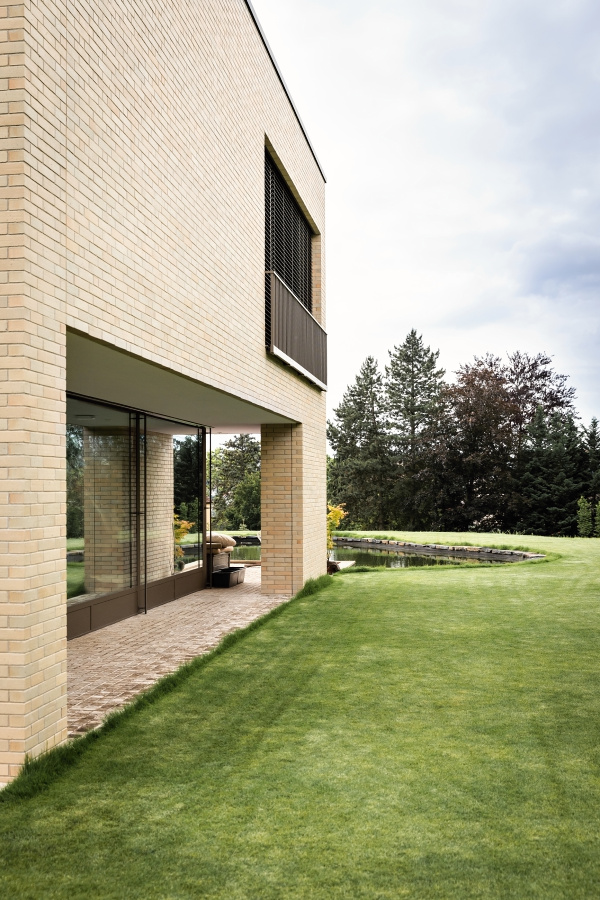
Czech brick saves Czech monuments
 |
The history of the brickworks in Kadaň, currently owned by BRISPOL, dates back to 1885, yet it has managed to preserve the atmosphere of past times to this day. And not only that. We can also find the original technical equipment, such as machines from the locksmith workshop. "Thanks to this, and also due to manual production, we are able to react relatively quickly to changes in the production process and create molds of various sizes and shapes within a few days," Jiří Souček enumerates the advantages of the old brickworks, where not only bricks are created, but also paving, facade strips, and special shapes made according to traditional recipes.
Product Appreciated by Architects and Heritage Protectors
The raw materials processed in this manufacturing plant come exclusively from the domestic market and are purely of natural origin – it is a mix of clays, water, and aggregate in the form of sand or grog. The resulting fired products are therefore 100% recyclable, and additionally, they achieve the highest possible quality levels. "They can safely be used even underwater, for example, in the construction of wells, sewers, or canals, and due to their high strength, they are suitable for both walkable and load-bearing surfaces," reveals Jaroslav Zeus, the company's expert guarantor and sales representative for Prague and the Central Bohemia region, during our visit.




Local bricks and other elements made of fired clay are primarily used in the reconstruction of historic buildings such as castles, chateaux, churches, or first-republic villas, but they are also applied in new constructions. Heritage protectors and architects request them especially for their unique properties, which include high strength, very low absorbency, and resistance to acid rain, frost, and chemicals, as well as their natural appearance, which is influenced only by the natural composition and firing technique. "We do not add color to the bricks, so they do not fade over time and resist UV radiation," adds Jaroslav Zeus.
Hexagon, Rhombus, and Relief
However, it is not always desirable to produce a brick with the best properties. "When it comes to the replica of a historic building, we first have to analyze the original masonry and manufacture the specific elements so that they closely resemble the originals – meaning they have the corresponding absorbency, porosity, strength, and so on," describes Jiří Souček, citing the example of Cheb Castle, for which BRISPOL has supplied nearly 200,000 bricks for its extensive restoration, including custom-made caps or corner accessories.Other historic buildings have often required the production of atypical elements. One such case was the crumbling brick fence at the heritage-protected parsonage in Vrchotové Janovice, where it was necessary to create concealed bricks in a rhombus shape and an unusual size for its repair. Another noteworthy project is a villa in Prague's Hanspaulka. For the ventilated facade systems and extension, the investor required slimmer and lighter bricks that would not overly stress the anchoring system. The company thus created lightweight bricks in a reduced format (290 × 100 × 65 mm), while maintaining the standard Czech format (290 × 65 mm) in view.






Experts from BRISPOL have experience not only with atypical shapes in the form of various curvatures, angles, and so on, but the local brickworks can also produce bricks with embossing, reliefs, fingerprints, or even a more porous structure if the project requires it. Fired ceramic tiles, which are strong, frost-resistant, and non-slip due to traditional recipes, are not an exception either.
An impressive example can be the hexagonal tiles laid at the Husitské Museum in Tábor or the replica of historic tiles in the choir of the Church of the Child Jesus of Prague. This was created based on the preserved remains of baroque tiles, composed of three colors, which creates a three-dimensional effect. "We believe that Czech monuments undeniably deserve a connection with traditional Czech production," concludes the statutory director.
text Kristýna Brožová
photo archive of the company
The English translation is powered by AI tool. Switch to Czech to view the original text source.
0 comments
add comment











